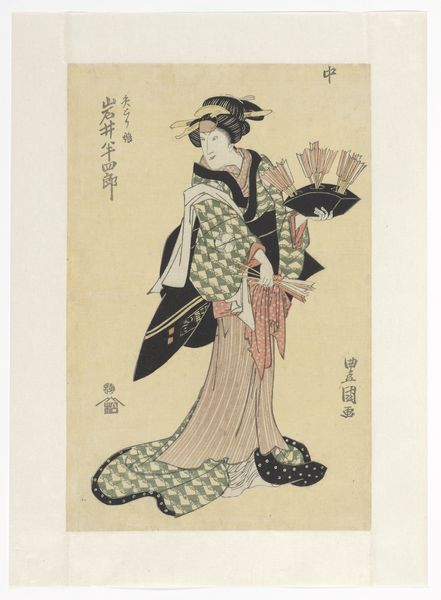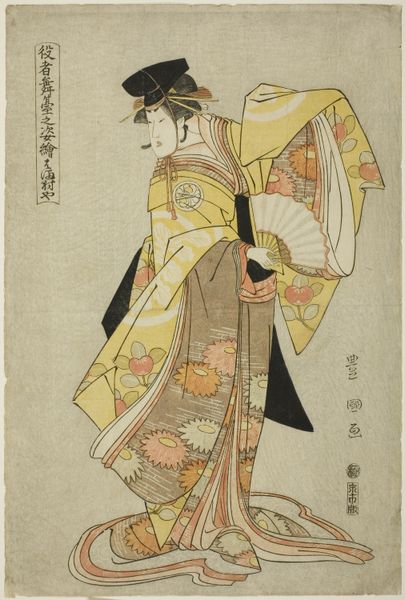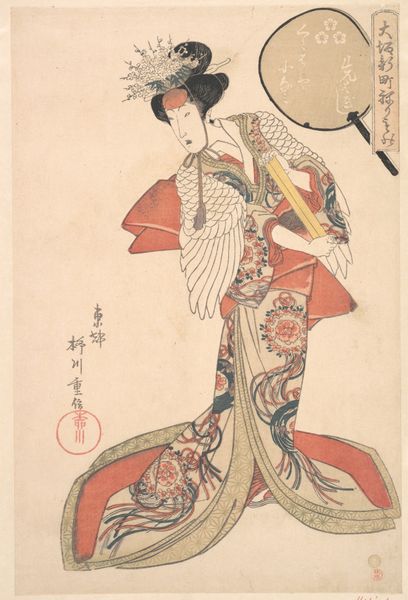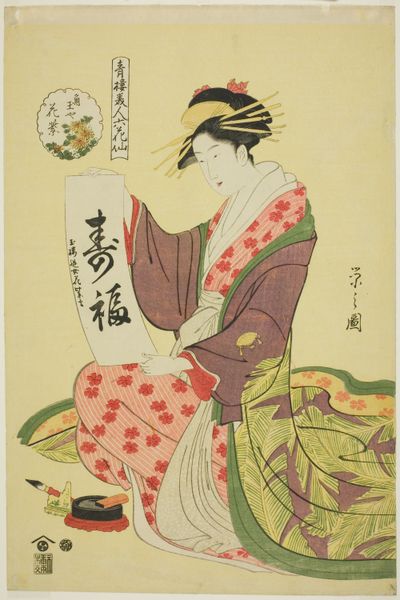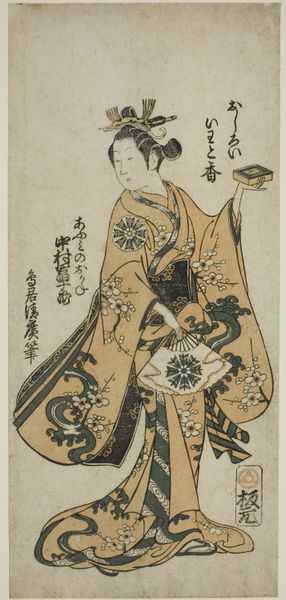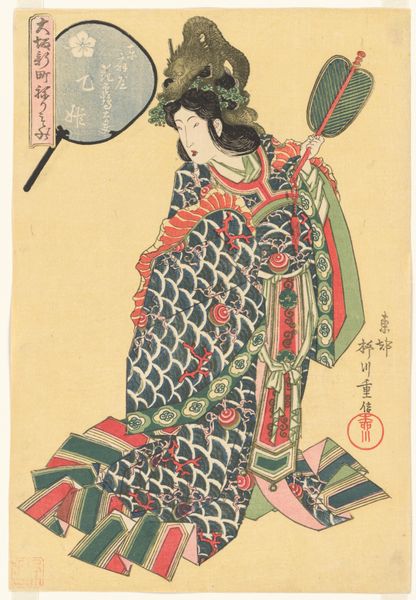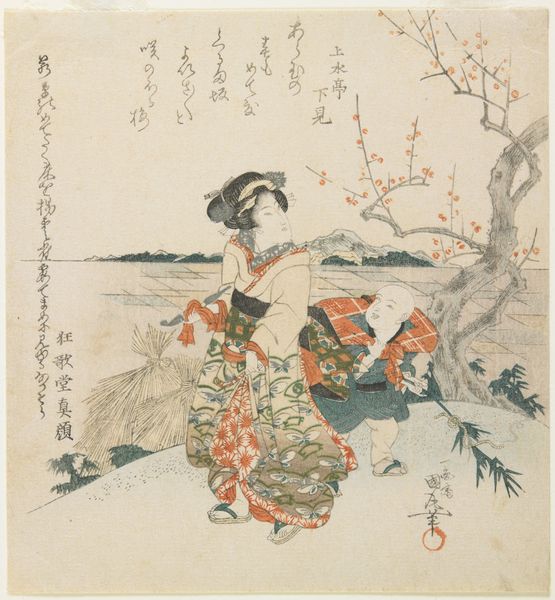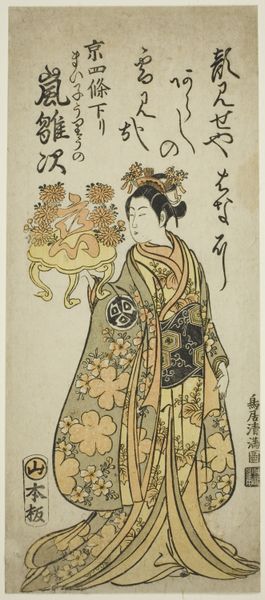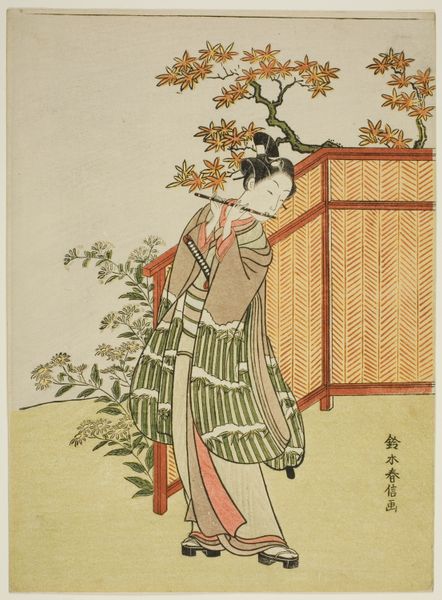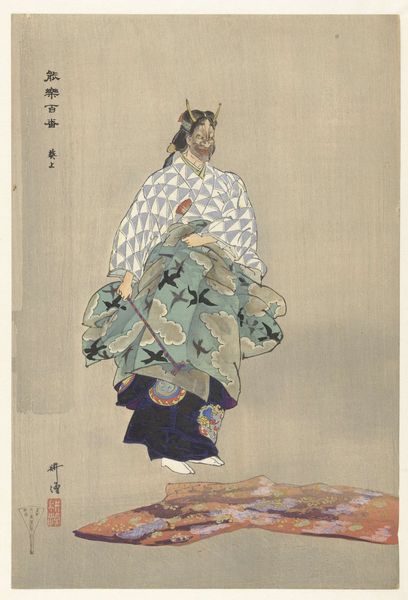
Okina, from the series "Pictures of No Performances (Nogaku Zue)" 1898
0:00
0:00
print, watercolor, woodblock-print
#
portrait
# print
#
asian-art
#
watercolor
#
woodblock-print
#
decorative-art
#
decorative art
#
watercolor
Dimensions: Approx. 25.2 × 37.4 cm (10 × 14 4/3 in.)
Copyright: Public Domain
Curator: I find this woodblock print so striking. It’s titled "Okina, from the series 'Pictures of No Performances (Nogaku Zue)'", created by Tsukioka Kōgyo in 1898. What are your first impressions? Editor: It’s remarkably serene, isn't it? There's an ethereal quality to the depiction, particularly in the soft, almost dreamlike watercolor wash and the incredibly ornate robe with patterns, that catches the eye. What does “Okina” signify here? Curator: Okina is one of the oldest plays in the Noh repertoire, a sacred dance ritual. This print offers a window into understanding the role of Okina within a cultural and theatrical context. Okina's role symbolizes a prayer for peace and prosperity, blurring the lines between performance, ritual, and cultural preservation. Editor: The imagery surrounding the figure - the pine branch, the fan, even the crane emblem in the background - these are heavy with symbolic weight aren't they? The pine is often associated with longevity, steadfastness... It almost feels as though this is meant as an invocation as much as a representation. Curator: Exactly! And the artist, Kōgyo, deeply revered Noh theatre. His series not only documents the plays, but elevates them. You can see how his understanding of Meiji era political, social and artistic sensitivities seeps into his renderings. This print served to reinforce Noh as a traditional performance, distinct from modern entertainment forms taking root at the time. It’s an act of cultural preservation through art. Editor: That context certainly adds layers of meaning to what initially appears as a static, dignified portrait. It challenges us to think about the dynamic role of artistic traditions in shaping cultural identity during periods of change, even as performance practices morph over time in relation to its social contexts. It isn't simply an illustration, but a form of cultural memory itself, with embedded layers. The figure is a timeless archetype. The robe pattern itself repeats to convey endurance. Curator: Indeed. Seeing it with these interpretations deepens the experience. Editor: Agreed. It’s fascinating to uncover the meanings within this work, revealing connections across centuries.
Comments
No comments
Be the first to comment and join the conversation on the ultimate creative platform.



